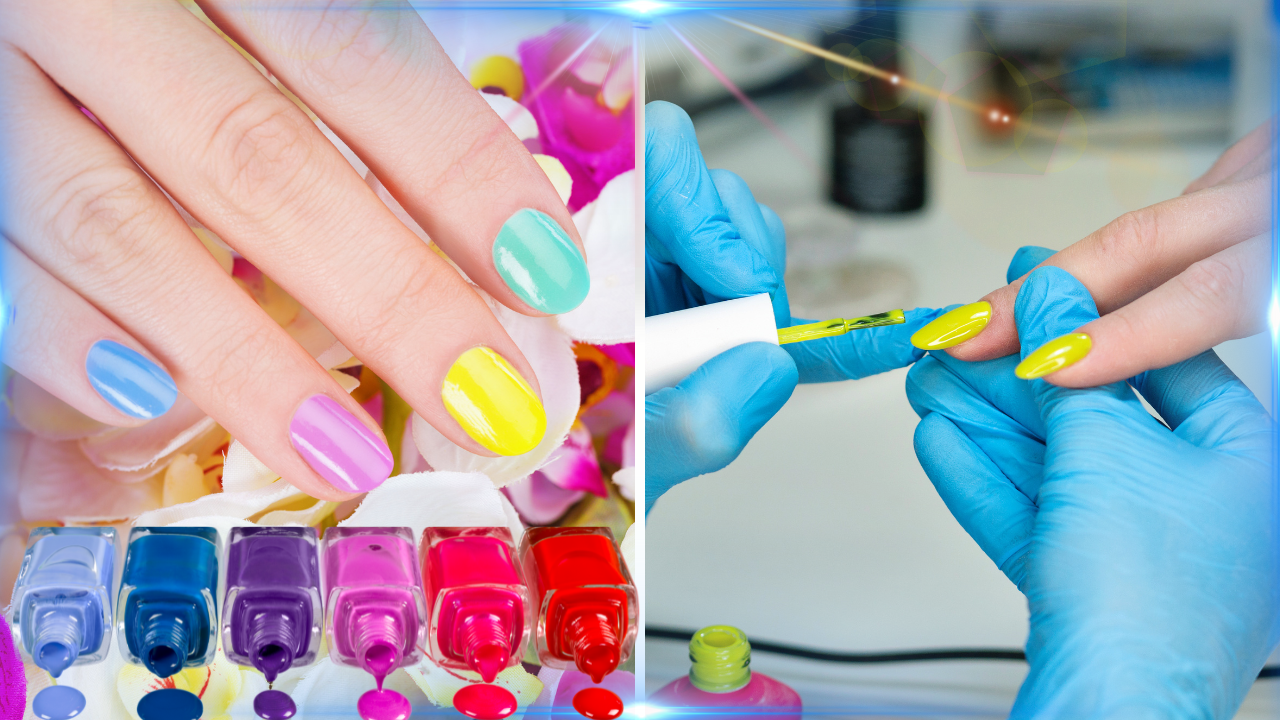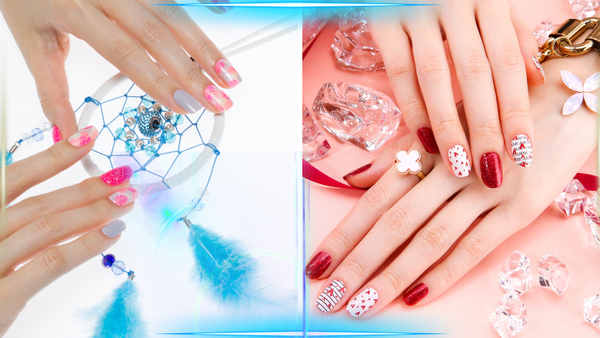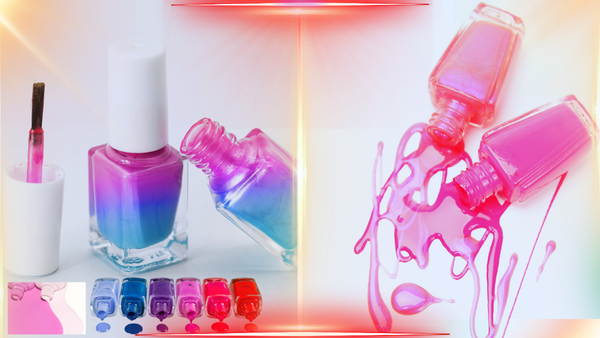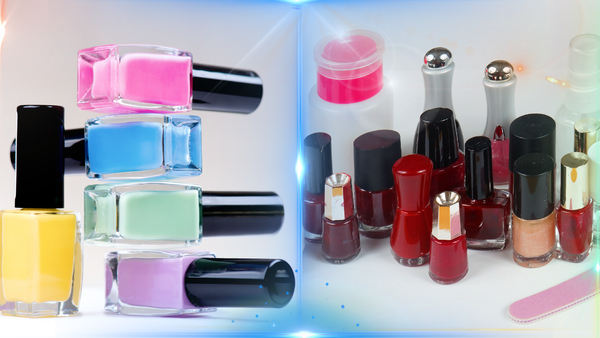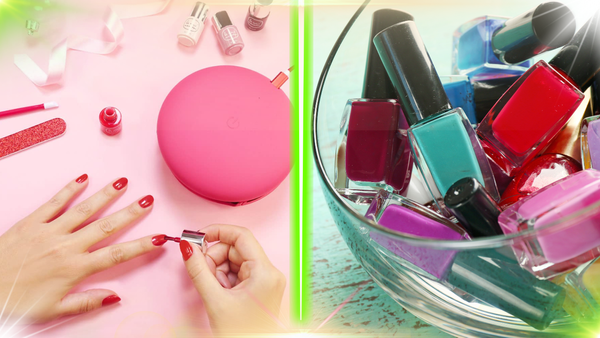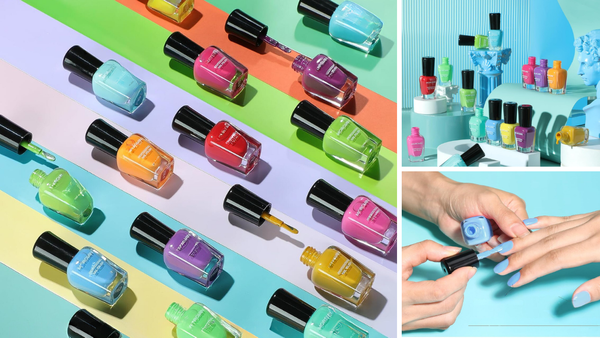Are nail polish sets safe to use? This pressing question is at the forefront for anyone looking to beautify their nails without compromising their health. Our in-depth analysis dispels the haze around the potential risks, offering clarity on ingredient safety, ‘free-from’ labels, and how to select polishes that promise beauty without harm. Embark on this insightful journey through the world of nail polish, where safety and style attempt to coexist harmoniously.
Key Takeaways
- Nail polishes labeled ‘7-free’ or ‘10-free’ avoid certain harmful chemicals, but the ‘free’ label doesn’t guarantee safety as other less-studied substances may be used instead.
- Water-based polishes offer a non-toxic alternative with minimal odor and are environmentally friendly, though they may require more layers for vibrant color and long-lasting wear.
- Proper application, ventilation during use, and gentle removal are key for safely using nail polishes, and customer reviews and certifications can guide us toward safer and more sustainable options.
Decoding Nail Polish Safety
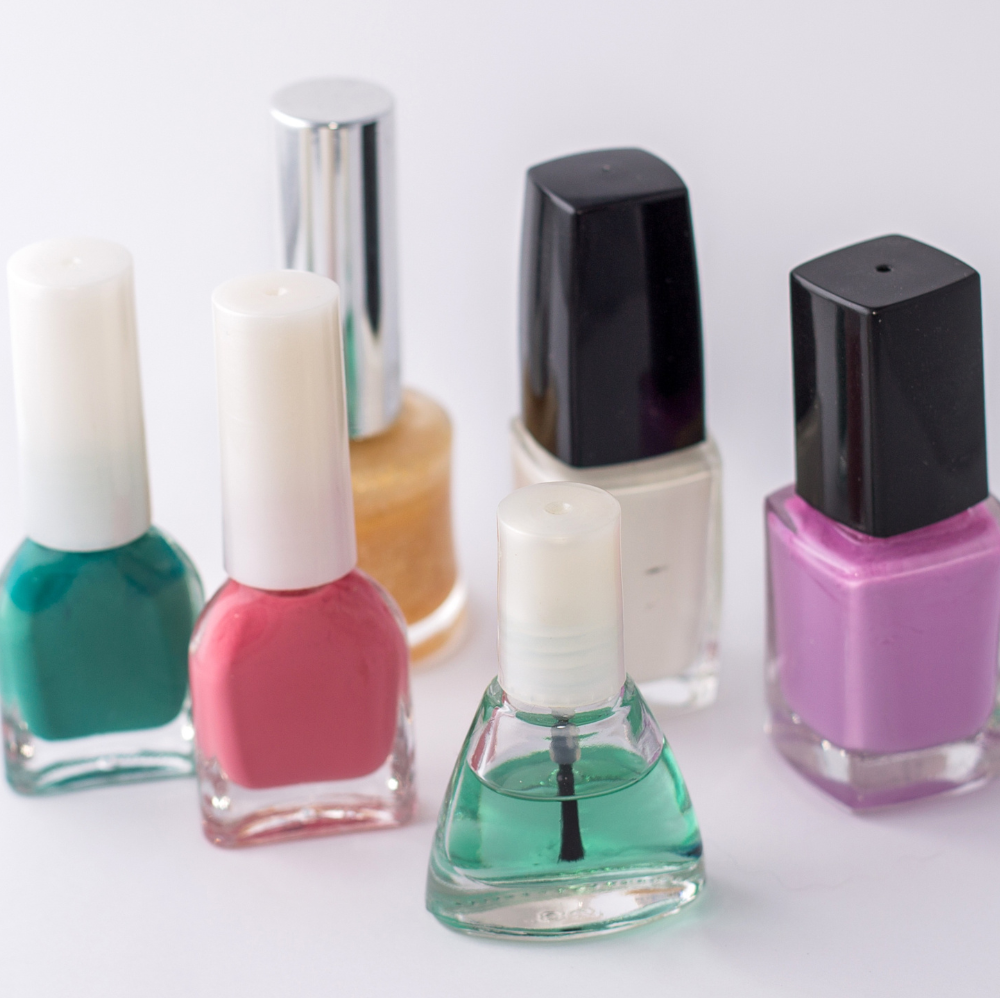
As we explore the vibrant realm of nail polishes, we must grasp the exact components that fill these tiny bottles decorating our nails. The journey to healthier manicures begins with decoding the safety of the products we use. Understanding the composition of nail polish is the first step towards making informed choices that align with our health and wellness goals.
From the glossy finishes in nail salons to the matte topcoats we apply at home, every polish has a story—a chemical story—that may impact more than just our nails. Shall we discover what truly lies beneath that top coat?
The "Free" Factor
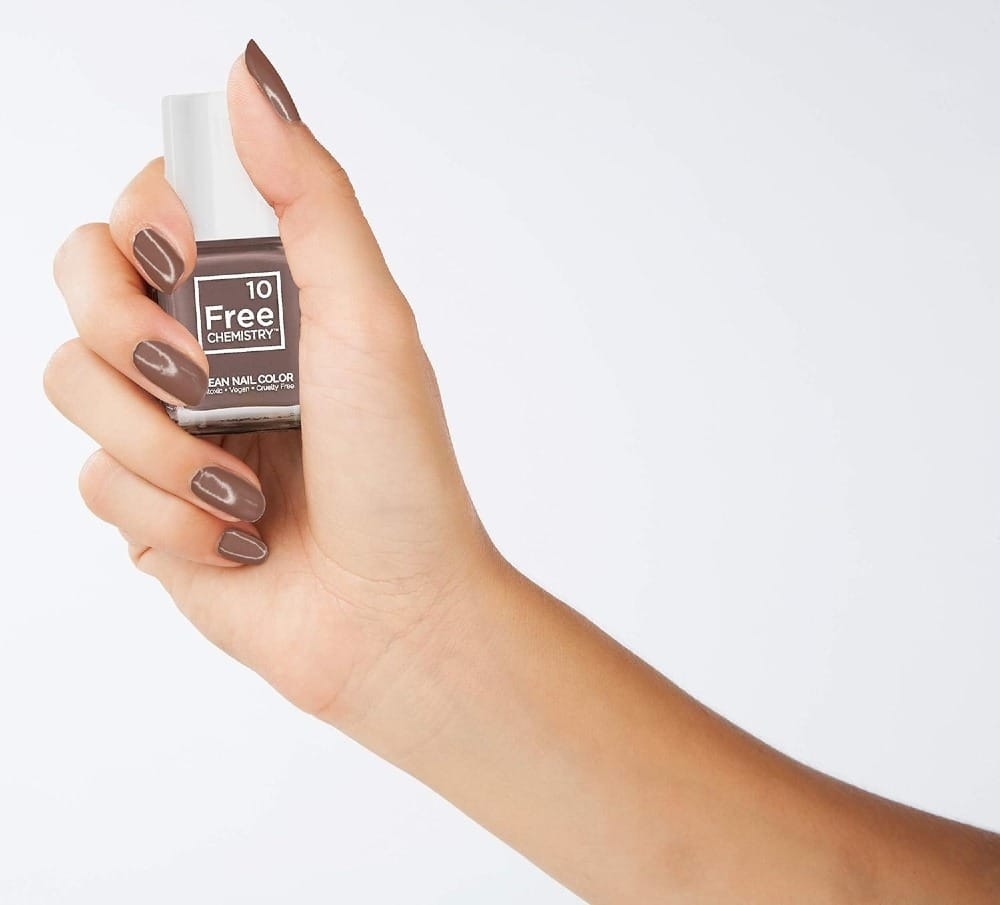
The term “free” in the nail polish world isn’t about cost—it’s about liberation from worrisome chemicals. When you spot a bottle labeled ‘7-free’ or ‘10-free,’ it’s a little victory dance for your nails. These designations—‘7-free’, ‘10-free’, and even the more ambitious ‘15-free’—represent the Polish’s pledge to keep certain harmful chemicals at bay, offering relief for those concerned about toxic exposure. But before we throw a Polish party, the ‘free’ label doesn’t always guarantee complete safety.
The focus on ‘free’ isn’t always rosy; a known toxin is occasionally swapped with a less researched substance, which may hold similar effects. Choosing wisely means looking beyond the label to free our nails from harm truly.
The Chemical Culprits
In the quest for the perfect manicure, we often encounter a lineup of chemical suspects that could be doing more damage than good. Traditional nail polishes have been known to harbor a cocktail of ingredients like toluene, formaldehyde, formaldehyde resin, and dibutyl phthalate (DBP), which sound more like a chemistry experiment than a beauty routine. These toxic chemicals can lead to a myriad of health risks, including allergic reactions, not to mention the environmental toll they take once disposed of.
This serves as a sharp reminder that the scent of a fresh manicure often goes beyond an unpleasant odor—it could be a warning sign to examine what’s truly happening to our nails.
Water-Based vs. Conventional Polishes
Water-based options are like the gentle cousin to their conventional counterparts when it comes to nail polishes. These non-toxic alternatives promise minimal odor and a respite from the harsh chemical cocktail in traditional polishes. Brands like Klee Kids and Little Poni Starter Set by Kapa Nui Nails are making waves with water-based formulas that are as kind to your nose as they are to your nails.
However, we shouldn’t overlook the performance—while a few extra coats might be needed for that vibrant color, brands like Klee Kids demonstrate superior longevity. So, could water-based polishes be the future of nail care? The clear skies (and less pungent air) point to yes.
A Closer Look at Non-Toxic Nail Polish Sets
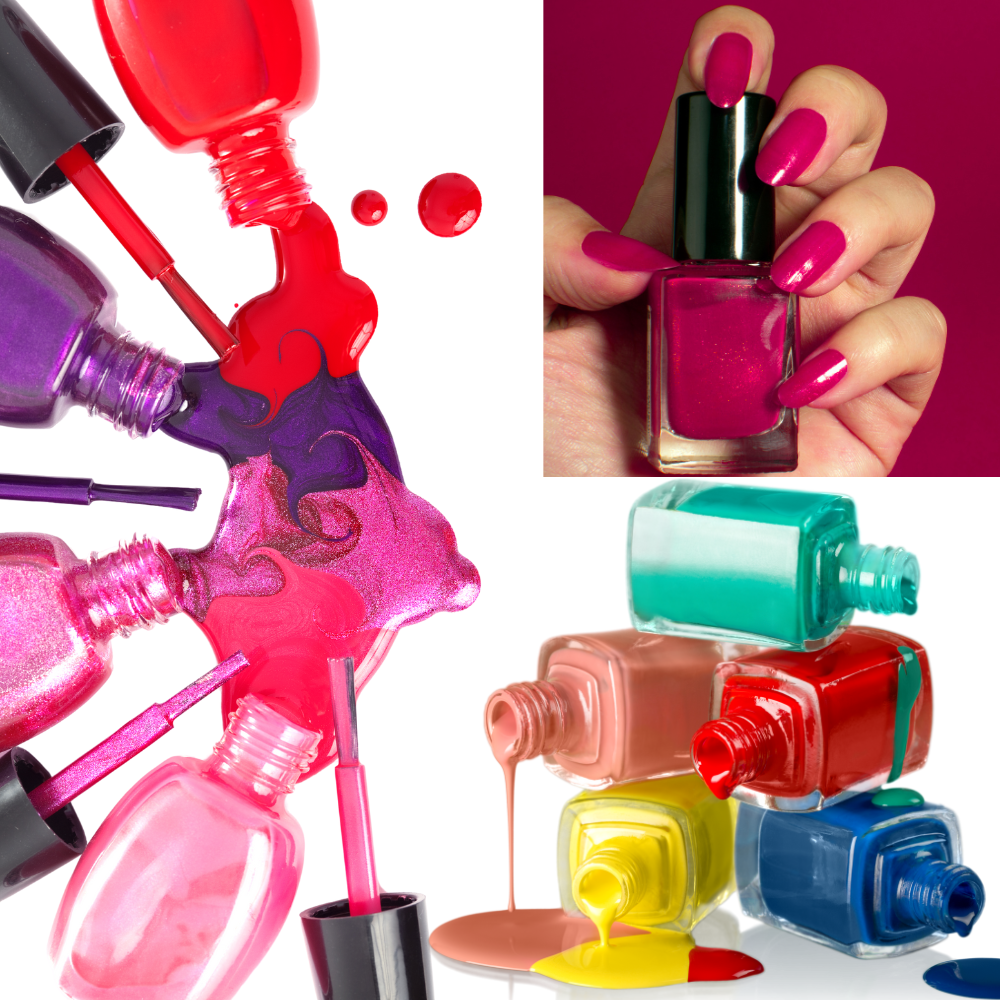
Wading deeper into the world of non-toxic nail polishes, we find a treasure trove of options that don’t skimp on style or safety. These polishes are stepping up to the plate, offering a breath of fresh air—literally—with their low-odor formulas and vibrant hues that challenge the notion that safety means dull colors. Brands are proving that non-toxic can be synonymous with high performance and eco-friendliness, embracing the idea that our manicures can be beautiful and benign.
But do these Polish pioneers measure up to expectations? We must delve deeper and examine whether these non-toxic nail polish sets can fulfill their promises.
Brands Leading the Way
In the crusade for cleaner nails, some brands lead the charge with innovative formulations that marry non-toxicity with top-notch performance. JINsoon, CÔTE, and Pacifica are just a few names trailblazing the path with their ‘10-free,’ ‘16-free,’ and ‘14-free’ nail polish formulas. These trailblazers aren’t just about avoiding the bad stuff—they’re delivering the good with chip-resistant wear, quick-drying properties, and colors inspired by nature and lifestyle.
Kapa Nui Nails takes it a step further, focusing on eco-friendliness and crafting water-based polishes that are kinder to our planet. It’s brands like these that are painting a brighter, healthier future for our nails.
Customer Reviews & Experiences
But don’t just take the brands’ word for it—customers are painting a picture of their experiences with non-toxic nail polishes. Olive & June have charmed users with their long-lasting formulas and DIY-friendly application process, turning skeptics into believers. On the flip side, the Karma Kids Box Set has faced some criticism over its strong smell and the challenge of its thicker consistency.
It’s a mixed palette of reviews, but one thing is clear: customer experiences are invaluable in understanding the true color of non-toxic nail polishes, such as Piggy Paint.
Certifications and Standards
As we navigate the sea of non-toxic options, certifications and standards serve as our compass, guiding us toward safer harbors. The ‘10-Free’ standard reassures us that ten harmful chemicals are absent from the polish in our hands. Vegan certifications further ensure no animal-derived ingredients have snuck into our polish pots.
With a marketplace expanding towards ethical and sustainable beauty, these certifications are more than just stickers on a bottle—they symbolize a brand’s dedication to health, sustainability, and transparency.
Safe Usage of Nail Polish Sets
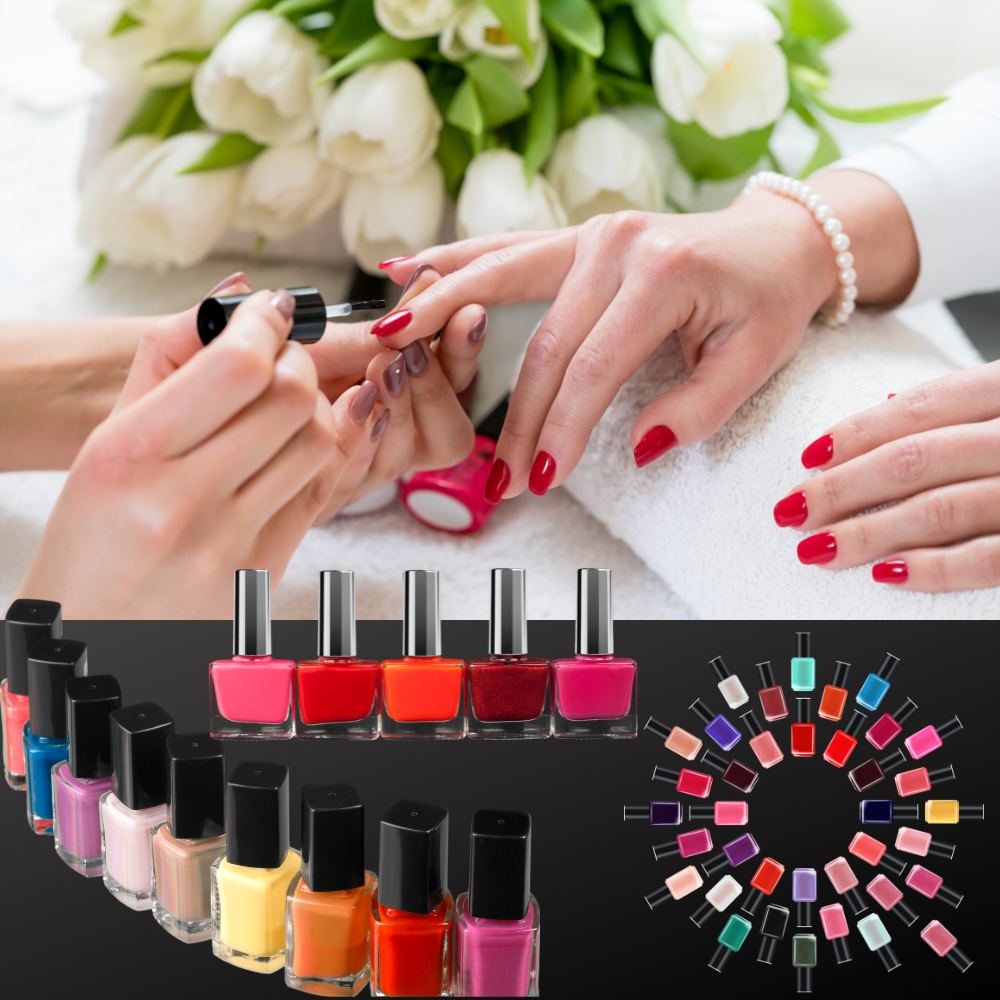
While non-toxic polishes are making strides, how we use these colorful concoctions still plays a pivotal role in our nail health. Safe application techniques and removal processes are as crucial as choosing the right polish. Every step can contribute to or detract from our overall nail well-being, from the base coat to the topcoat.
We should revisit the best practices that ensure our healthy nails maintain their fabulous look without jeopardizing our health.
Application Techniques
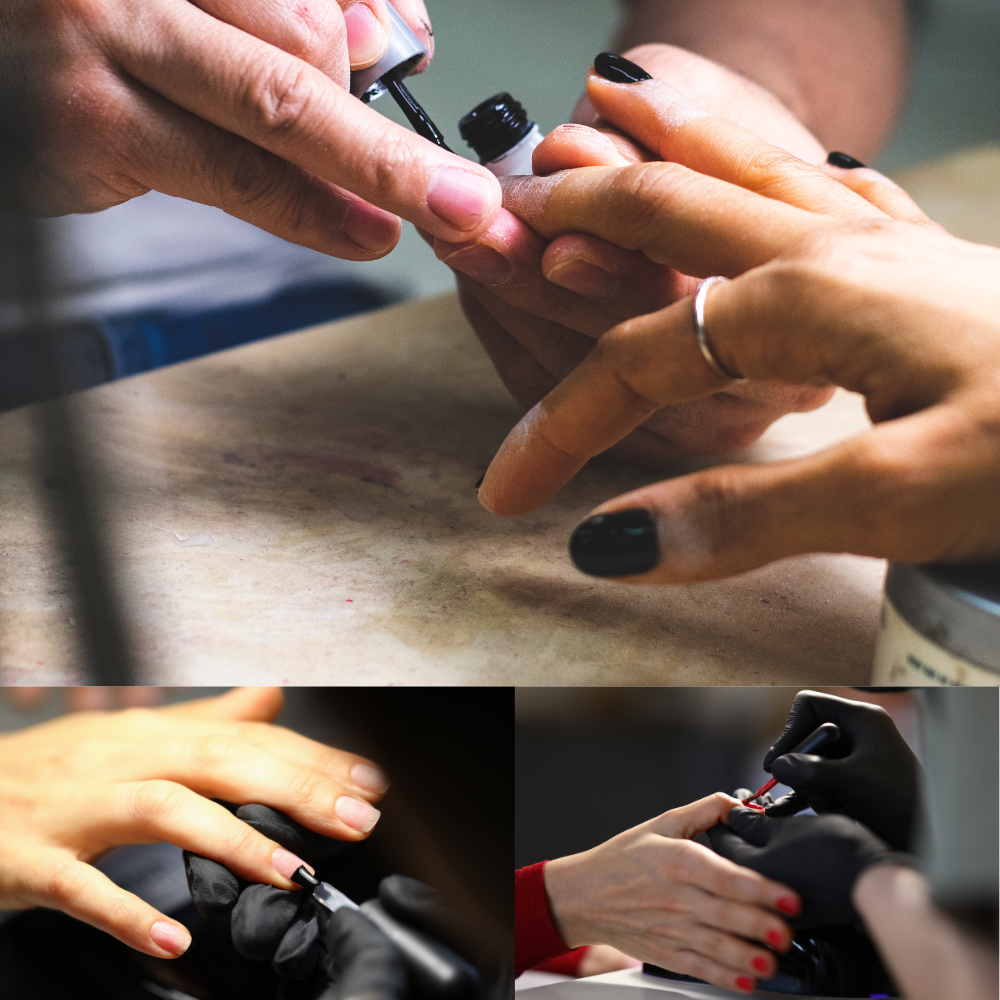
Perfecting the art of polish application is about more than just avoiding smudges—it’s about safeguarding our skin and nails. Here are some tips to keep in mind:
- Minimize skin contact with nail polish to prevent allergic reactions and potential skin irritation.
- For gel polish, protect your hands with sunscreen before using UV lamps to shield your skin from potential harm.
- Removal is just as important as application. Use gentle techniques and specialized removers to prevent nail damage and keep cuticle content.
Ventilation Matters
A breath of fresh air isn’t just a metaphor for nail care—it’s an essential element. Ventilation is the unsung hero in nail salons and home manicure stations, playing a critical role in diffusing the fumes from our favorite polishes. It’s about more than just comfort; proper airflow can drastically reduce our inhalation of those pesky toxic particles.
So next time you’re ready to paint your nails, consider it a chance to let your nails—and your respiratory tract—breathe a little easier.
Nail Health Tips
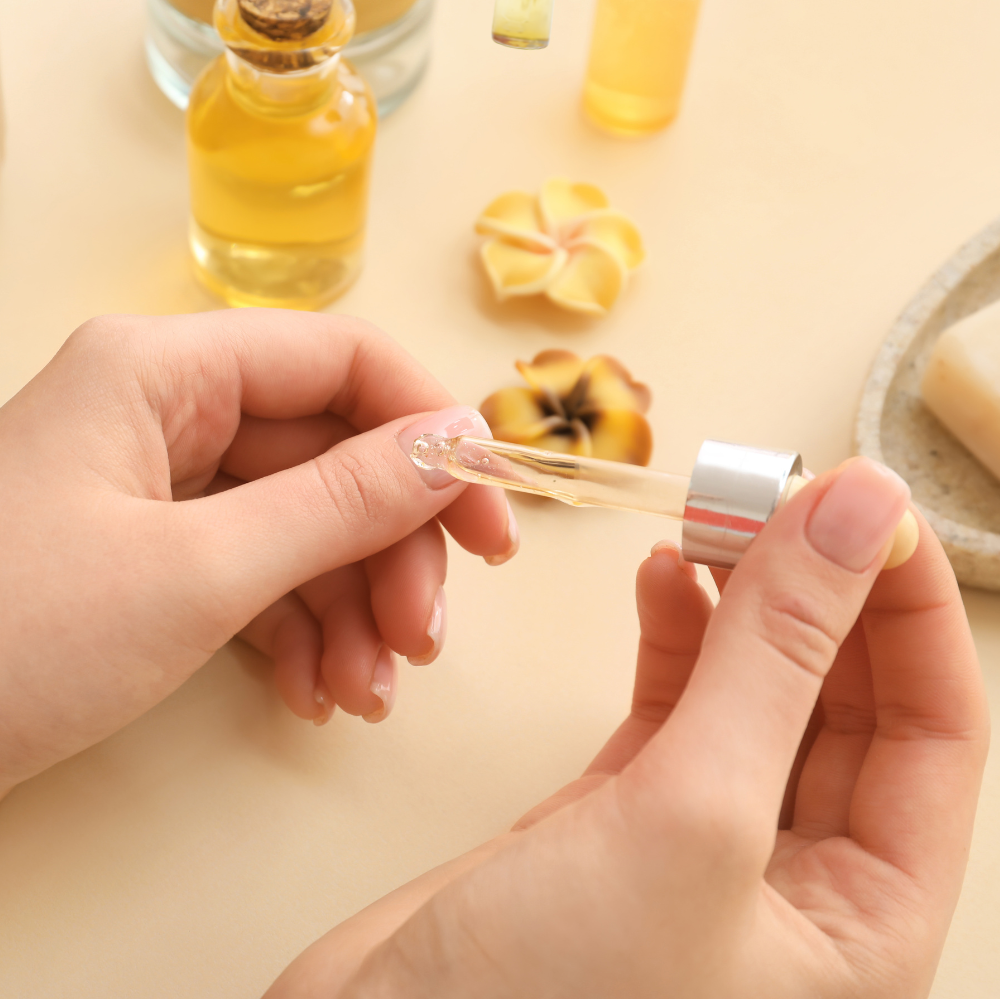
The real work begins after the polish comes off—nurturing our nails back to their natural glory. Hydration and remineralization are the dynamic duo for rehabilitating brittle nails, with cuticle oil playing the lead role. Protecting harsh removal methods is key to preventing peeling and splitting, and opting for nourishing products can help our nails recover from post-polish trauma.
These small acts of TLC can keep our nails healthy, happy, and ready for the next color adventure.
Alternatives to Traditional Nail Polishes
Sometimes, straying from the beaten path of traditional nail polishes leads to delightful discoveries. For various reasons—health, convenience, or ethical concerns—alternatives to conventional nail polish are emerging as champions in their own right. From press-on nails to plant-based formulas, a world of options caters to our individual needs while allowing us to express our style.
We should examine these alternatives and how they stand compared to today’s nail care standards.
Press On Nails
Pressing on nails is like fast fashion nail care—quick, convenient, and surprisingly chic. They come ready to go, eliminating the need for toxic polishes and providing a smorgasbord of designs. They are a breeze to apply and offer the benefit of being reusable, stretching your dollar further than a single salon visit.
While they may not have the endurance of gel or acrylics, for those looking to switch up their style without the commitment, press-ons are a perfect match.
Natural Nail Treats
For the eco-conscious and health-savvy, natural nails are like a nourishing smoothie for your nails. These plant-based polishes bring the best of nature to our nail care routine, infusing our nails with vitamins and strengthening agents like biotin and keratin.
Not only do they add a splash of color, but they also contribute to the overall health of our nails, making them a treat in every sense of the word.
Gel Polish Considerations
Gel polish has its own set of rules and considerations, especially regarding health and safety. The allure of a long-lasting shine comes with caveats—potential nail damage and skin concerns due to UV exposure are not to be taken lightly. Using thin layers, avoiding skin contact, and proper curing are the commandments of safe gel polish use.
For those who can’t resist the gel appeal, embracing non-toxic formulas and protective measures can make all the difference in preserving the health of our nails.
Impact on Salon Workers
While we enjoy the pampering and polish of a nail salon visit, it’s important to remember those on the other side of the manicure table. Salon workers are the backbone of the beauty industry, yet they face daily exposure to the not-so-pretty side of nail care—the toxins. With health risks that shouldn’t be glossed over, it’s time to shine a light on the well-being of these professionals and the measures that can be taken to protect them.
Health Risks for Salon Professionals
For nail salon workers, the risks associated with prolonged exposure to the chemicals in polishes and treatments aren’t just hypothetical—they’re an everyday reality. These chemical exposures can lead to a spectrum of health issues, ranging from respiratory difficulties to thyroid irregularities.
The extended hours in salons only heighten these risks, underscoring the importance of comprehending and tackling the potential health repercussions for these devoted professionals.
Protective Practices in Salons
Thankfully, there are protective practices that can help mitigate the health risks salon workers face. Ventilation systems, personal protective equipment like masks, and responsible chemical handling are all part of a safer salon environment.
By combining these safety measures with less-toxic products, we can help ensure that the beauty of a manicure isn’t marred by the health hazards lurking behind the polish.
Sustainability in Nail Care
The planet’s wellness is progressively becoming a significant consideration on the journey towards beautiful nails. The nail care industry is stepping up with eco-friendly practices that aim to leave a lighter environmental footprint. From sustainable packaging to biodegradable ingredients, we’re shifting towards a more conscious approach to beauty—one that cares for our nails and our world.
Eco-Friendly Packaging Innovations
Sustainable packaging is a breath of fresh air for the nail care industry in a world drowning in plastic. Innovative brands are embracing materials like glass and biodegradable cork, reducing waste and pollution. By pairing these eco-conscious packaging choices with responsible production practices, like minimizing imports, brands like Kapa Nui Nails are leading toward a greener, cleaner future in nail care.
The Lifecycle of Nail Polish
The impact of nail polish extends far beyond our manicure’s lifespan. Traditional disposal methods, such as incineration or dumping in landfills, pose significant environmental threats. This harsh reality prompts a question: how can we make the lifecycle of our beloved polishes more sustainable?
As we uncover answers, it becomes clear that manufacturers and consumers are responsible for seeking and supporting alternatives that respect our planet's delicate balance.
Summary
To wrap up our colorful exploration, it’s clear that the world of nail polish is as complex as the myriad of hues available at our fingertips. We’ve uncovered that safety and beauty coexist, with non-toxic options paving the way for healthier nails and a cleaner environment. Brands are stepping up, customers are speaking out, and we’re redefining what it means to be stylish and sustainable. Every choice counts, from the air we breathe in salons to our impact on the planet. So, as we admire our freshly painted nails, let’s ensure our choices reflect our commitment to well-being—for ourselves and the world around us.
For those interested in some nail products' huge discounts with amazing deals up to 50% off, please click here.
Frequently Asked Questions
Can nail salon workers protect themselves from the chemicals in nail polish?
Yes, nail salon workers can protect themselves by using proper ventilation, wearing masks, and handling chemicals responsibly when working with nail polish.
What makes a nail polish eco-friendly?
An eco-friendly nail polish is made without harmful chemicals, uses sustainable packaging materials, and incorporates natural ingredients to be kinder to both nails and the planet. It also implements production practices that minimize environmental impact.
How can consumers contribute to sustainability in nail care?
To contribute to sustainability in nail care, choose non-toxic and eco-friendly nail polishes, support brands with sustainable packaging, and dispose of nail polish properly to minimize environmental harm.
